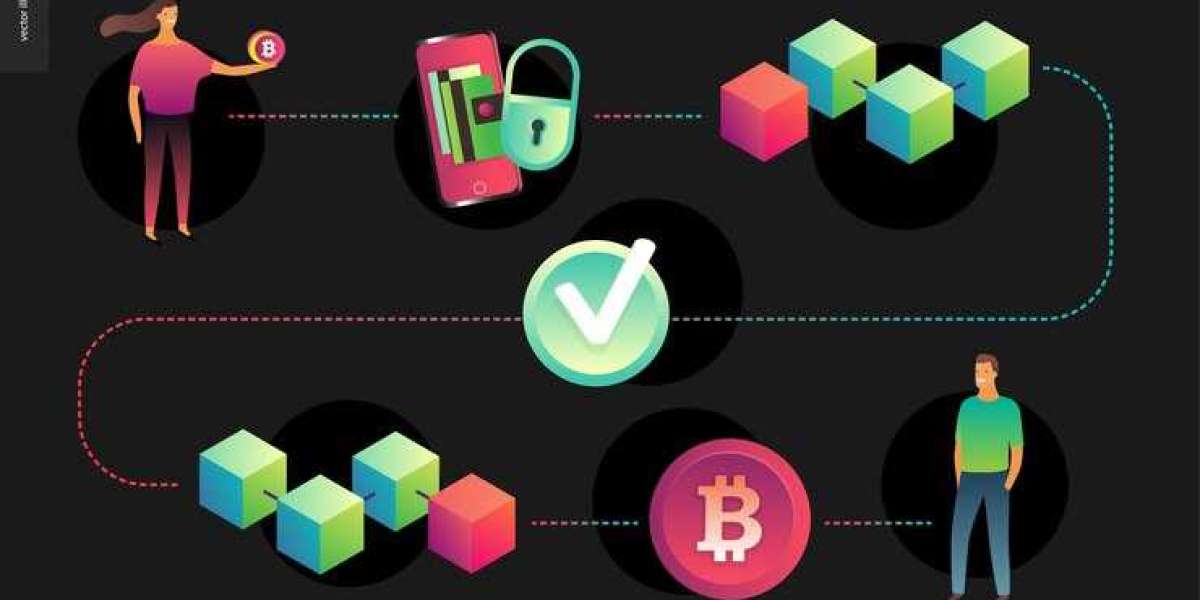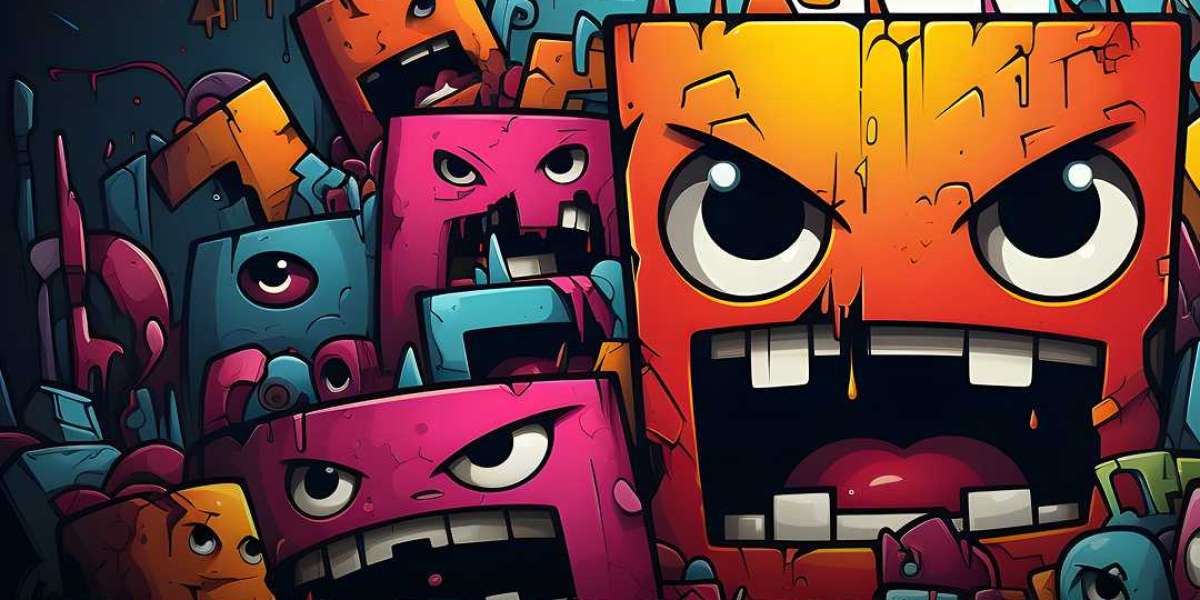In today's digital era, explaining complex technological concepts in a simple, engaging, and easy-to-understand manner is critical. One such complex topic is blockchain technology. Whether you're introducing blockchain to investors, clients, or the general public, communicating its intricacies in a digestible format can be challenging. This is where 3D animation comes into play, making blockchain concepts both accessible and visually engaging. In this blog, we’ll explore how 3D animation can be a powerful tool to explain blockchain and its potential for future product marketing strategies, especially with trends in the animation industry trends 2025.
What is Blockchain?
Blockchain is a decentralized digital ledger that records transactions across multiple computers. This technology ensures that records cannot be altered retroactively without altering all subsequent blocks, making it highly secure and transparent. While blockchain's applications span beyond cryptocurrencies like Bitcoin, it remains a complicated topic for many people. Traditional explanations often involve lengthy texts and abstract diagrams, which can confuse more than clarify.
Enter 3D animation, a dynamic and engaging medium that can transform how we approach and comprehend blockchain concepts.
Why Use 3D Animation to Explain Blockchain?
3D animation helps break down abstract, complex ideas into visually digestible elements. With its ability to create vivid, realistic, and interactive visualizations, 3D animation makes it easier for audiences to grasp difficult topics like blockchain. It provides a clearer understanding of how decentralized networks work, how transactions are verified, and what makes blockchain secure.
Here are some key benefits of using 3D animation to explain blockchain concepts:
Visualization of Abstract Concepts: Blockchain’s underlying infrastructure, such as nodes, miners, and chains, can be difficult to conceptualize. Through 3D models, animations can illustrate how blockchain works by turning abstract elements into tangible visual experiences. For example, a block of data can be depicted as a 3D cube, showing how it links to other blocks in a chain.
Simplification of Complex Processes: Blockchain’s process of validating and recording transactions involves numerous steps. With 3D animation, viewers can visually track the process, such as seeing a transaction move across a network of computers (nodes), being validated, and then recorded in a block, which is added to the chain.
Increased Engagement: 3D animations are highly engaging and capture the audience's attention better than static text or diagrams. They bring a sense of motion, depth, and interactivity that static visuals simply can’t provide, making it easier to retain information.
Better Storytelling: Animations can help tell a compelling story. Instead of dry technical explanations, an animated scenario could be used to showcase how blockchain benefits various industries, from banking to healthcare, increasing comprehension through practical examples.
Interactive Elements: Advanced 3D animation techniques can also integrate interactive features. Viewers can engage directly with the animation, choosing specific steps in a transaction or exploring various aspects of a blockchain, which promotes deeper understanding and learning.
3D Animation Companies Leading the Charge
The rise of blockchain and its applications in sectors like finance, supply chain management, and digital identity has fueled the need for creative agencies to explain its concepts in a compelling manner. Several 3D animation companies are leading this charge, combining technical expertise with cutting-edge animation technology to create educational content that simplifies blockchain concepts.
These companies leverage state-of-the-art software and animation techniques to produce realistic and visually engaging animations that demystify complex topics. They tailor their animations for various platforms, from YouTube explainer videos to full-length interactive webinars. This trend highlights how animation companies are evolving to meet the needs of emerging technologies and industries.
By collaborating with 3D animation companies, blockchain startups and established tech firms can effectively communicate the value and functionality of blockchain to a wider audience. These firms are also focusing on creating animations for training programs, presentations, and product marketing strategies, ensuring that viewers gain an in-depth understanding of blockchain’s potential.
Blockchain and Product Marketing Strategies
Product marketing strategies in the digital age require innovative approaches to grab the attention of consumers, especially when dealing with cutting-edge technologies like blockchain. 3D animation offers a unique way to enhance product marketing strategies, specifically for tech companies and startups in the blockchain space.
Explainer Videos: A well-designed 3D explainer video can help showcase how a blockchain-based product works. Whether it's a cryptocurrency exchange or a blockchain-powered supply chain solution, a 3D animation can provide clarity on how the system works in a way that a written explanation cannot.
Investor Presentations: For tech startups looking to raise capital, clear communication is essential. 3D animation can be used in investor presentations to visually demonstrate how a blockchain solution adds value, making it easier for potential investors to understand the market opportunity and the technology behind it.
Product Demos: 3D animations can be an effective tool for showing real-life applications of blockchain products. For example, a company offering a blockchain solution for secure online transactions can demonstrate how the technology functions step-by-step using an animated flow.
Engaging Campaigns: With 3D animation, companies can create memorable advertising campaigns that resonate with audiences. Whether it’s a short social media ad or a longer YouTube video, 3D animations can draw people in and help them better understand the benefits of blockchain technology.
Animation Industry Trends 2025: The Future of Blockchain Animations
The animation industry is evolving rapidly, with new techniques and technologies emerging every year. By 2025, we can expect several trends in the animation industry that will further impact how blockchain concepts are communicated.
AR and VR Integration: Augmented reality (AR) and virtual reality (VR) are becoming increasingly popular. These immersive technologies will allow 3D animations of blockchain to be experienced in more interactive and engaging ways. Users could virtually "walk through" a blockchain transaction or visualize how their own transactions are processed on the blockchain.
Real-Time Rendering: Advances in real-time rendering technology, where 3D scenes are generated on the fly rather than pre-rendered, will allow for faster and more dynamic animation experiences. This trend will make it possible to create more fluid and interactive blockchain demonstrations.
AI and Machine Learning: As artificial intelligence (AI) and machine learning continue to develop, they will play a crucial role in the animation industry. These technologies will enable 3D animators to automate some of the processes involved in blockchain animation creation, improving efficiency and reducing costs.
Personalized Animations: By 2025, there will likely be an increased demand for personalized animations, where viewers can customize their learning experiences. Blockchain companies may offer customizable, on-demand tutorials or explanations that fit the user’s specific interests or needs.
Increased Demand for Interactive Content: As audiences demand more interactivity, the future of blockchain animation will likely involve more dynamic and interactive experiences, where users can engage directly with the animation and control the flow of information.
Conclusion
Using 3D animation to explain blockchain technology is a game-changer for businesses and educators looking to simplify complex ideas. 3D animation provides a clear, engaging, and interactive way to explain blockchain concepts, from its underlying structure to its practical applications. As we move into 2025, the animation industry will continue to evolve, with innovations such as AR/VR integration, real-time rendering, and AI-driven techniques making blockchain animations even more immersive and impactful. For companies looking to enhance their product marketing strategies, embracing 3D animation will be key to staying ahead of the curve and effectively communicating the benefits of blockchain technology.







